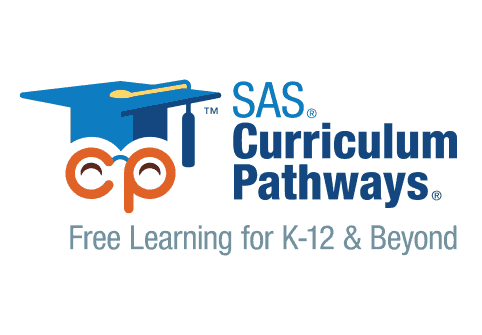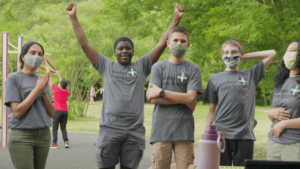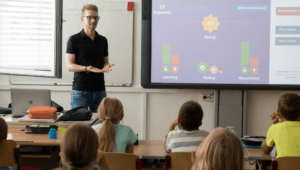4 Strategies to Create Tomorrow’s Classroom

The vision for tomorrow’s classroom looks nothing like the antiquated stereotype: students sitting in rows, passively listening to a lecture, followed by rote memorization tasks from a dusty, used textbook: some students in the “audience” nodding their heads; other heads nodding off. In many schools, the old model already seems quaint and ineffective. “In some classrooms,” the recently deceased Yogi Berra might have said, “tomorrow got here yesterday.”
1. Thinking Innovation. It Never Stops.
Out-of-the-box teaching tools are becoming increasingly obsolete. Instead, educators are creating their own and adapting existing creation/productivity resources that engage students in higher-order thinking, provide authentic, real-world activities that develop skills essential to lifelong learning, and personalize instruction to fit individual needs.
And the innovation never stops. With a new school year comes new technology, new budgets, new policies, and most importantly, new students. This means what worked last year will likely need to be redesigned. As a result, strict, scripted curricula with a one-size-fits-all mantra not only misconstrues the reality of our diverse classrooms, but they’ve begun to look stale before they’ve been unwrapped. The adjective “old-school” may be enjoying some recent popularity as a rough synonym for quality, rigor, and efficiency; ironically, however, the term has little relevance to the classroom.
To invert a quote from the sage Mr. Berra, old-school approaches have begun to look “over before they’re over.”
2. Developers Can Help.
So what can the developers of educational resources do to serve educators? A first step is to design for flexibility. Teachers don’t need a resource to teach for them, any more than a doctor needs a resource to speak with her patients or a lawyer needs a resource to draft his arguments. Our standards for teacher training and accreditation exist for a reason.
Nonetheless, teaching well is demanding work, and flexible tools can enhance the performance of even the most skilled practitioners by creating learning experiences that simply did not exist in the past. In science, to choose just one example, virtual labs can illuminate complex concepts in novel ways–much the way fMRI procedures enhance (but don’t replace) the work of the most skilled surgeons.
What’s crucial is that developers consider all of the constraints present in the classroom, that they design with the kind of foresight described in the Great App Checklist, which appears in our recently published Mobile Learning: A Handbook for Developers, Educators, and Learners:
- Student ability: Does the resource support differentiation?
- Student needs: Is the resource appropriate for English Language Learners and students with visual or hearing impairments?
- Student engagement: Will the resource charge students to engage in higher-order thinking: creativity, collaboration/communication, critical thinking, problem solving, etc.
- Student access: Will the resource work on a variety of devices (e.g., iPads, laptops, desktops)? Is the resource beneficial to a classroom with only one computer?
3. Build Your Dream School.
Keeping those goals and constraints in mind, Imagine building your dream school from the ground up. Imagine leading a grassroots effort equipped with 14 of the state’s most distinguished educators to create the ultimate education experience—matching the personal needs of each student to create an environment no kit or out-of-the-box curriculum could ever come close to emulating.
Where would you start?
That’s exactly the question Erica Prentice of Envision Science Academy found herself trying to answer last year. In early 2014, Erica was the newly-hired Curriculum Coordinator for Envision, and Year 1 was set to launch in August. She and her team of administrators and 14 classroom teachers (selected from over 1,000 applicants) were charged with developing an unconventional curriculum guided by the school’s mission: “provide innovative instruction through experiential learning with a focus on STEAM in order to prepare elementary and middle school students to compete, lead, and excel in the global marketplace.” Because this is a charter school, Erica notes, State and Common Core Standards dictated what needed to be taught, but the mission was to manifest through the how. And that was the greatest challenge.
Using the 7e instructional model, Erica and her fellow teachers needed something more than a generic, prepackaged curriculum; they needed an approach that inspired inquiry, demanded higher-order thinking and collaboration, and—most of all—allowed teachers the autonomy to meet the individual needs of their students. This was something they needed to design entirely from scratch. So that’s exactly what these passionate educators set out to do.
“By first quarter, instruction was amazing,” Erica says, “but the problem was time. Our teachers were coming in at 5 a.m., and some weren’t leaving until 8 p.m. But that’s what the stakeholders wanted, so we couldn’t cut corners. We were creating everything from the ground up, and it took so much time.” In an effort to relieve her valiant troops, Erica searched for supplemental resources. Concerned that these products would either not align with Envision’s mission or break its budget, Erica soon felt an unexpected sense of relief: she came across SAS Curriculum Pathways.
“There was nothing else out there anywhere close to SAS Curriculum Pathways in terms of quality, ease of access, and standards alignment… that would have been in our budget for year one,” Erica notes. “The vast number of resources and the thoughtful design for flexibility allow us to pick and chose what we want…, feel safe and confident that we’re bringing reliable information to our students, and provide opportunities we wouldn’t have been able to deliver otherwise.”
Started in the late 1990’s, SAS Curriculum Pathways has grown into a repository of 1,500+ resources designed to supplement classroom instruction by engaging students in meaningful learning experiences that foster a deep, robust understanding of concepts. But best of all, SAS Curriculum Pathways is provided at no-cost to educators and students around the world.
4. Stimulate Student and Teacher Creativity.
From individual lessons to innovative tools and apps, this expansive collection, Erica says, “helped us build the philosophy [of Envision] without being a restricted curriculum” that runs the risk of stifling teacher creativity and autonomy. With SAS Curriculum Pathways, educators can create compelling problem-based learning scenarios and strategically target instruction using formative assessment data to provide additional insight into the strengths and weaknesses of individual students. Unlike the more traditional classroom, where students sit in rows passively listening to a lecture, these more dynamic and personalized experiences—complemented by the latest technologies— encourage and develop learners that are self-regulated and prepared for the today’s workplace.
“As a new, grassroots charter school with lofty ambitions to improve education and create students who are going to be globally competitive and change the world,” Erica explains, “it’s so nice to have resources such as SAS Curriculum Pathways that are available for free.”
Although the particulars of this story might differ in many ways from those of your school, Envision still shares the same fundamental values as most educational establishments: steadfastly provide a quality education to all students. And Envision faces the same constraints other schools face: a diverse student population and a limited budget. SAS Curriculum Pathways was built to meet these fundamental challenges and to provide learning experiences that engage all students—regardless of technological or budgetary constraints.
So there’s no need to imagine yourself in Erica Prentice’s shoes: as an educator, you’re already wearing them. Equipped with quality educational resources from a source like SAS Curriculum Pathways, you’re ready to create tomorrow’s classroom today…for free!
This blog is part of a series brought to you by SAS Curriculum Pathways (Sign up for your free account atwww.sascurriculumpathways.com/signup). For more, stay tuned in November for the final published project, Getting Smart on Tomorrow’s Classroom: Free Innovative Tools, Resources, and Apps and check out additional related posts:
- No Cost, No Catch. How One Company Hopes to Close the Achievement Gap
- In Demand Job Skills and the Mobile Learning Process
- Information is the Key to Data-Driven Teaching
- 5 Projects for Your Project-Based Learning Classroom This Year
Lucy Kosturko is a Research Scientist at SAS Curriculum Pathways. Follow SAS Curriculum Pathways on Twitter, @SASeducator.





0 Comments
Leave a Comment
Your email address will not be published. All fields are required.